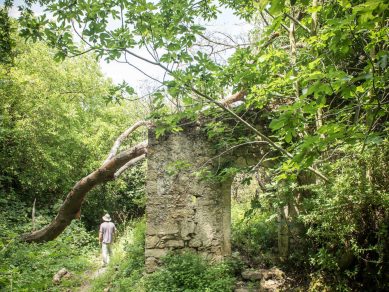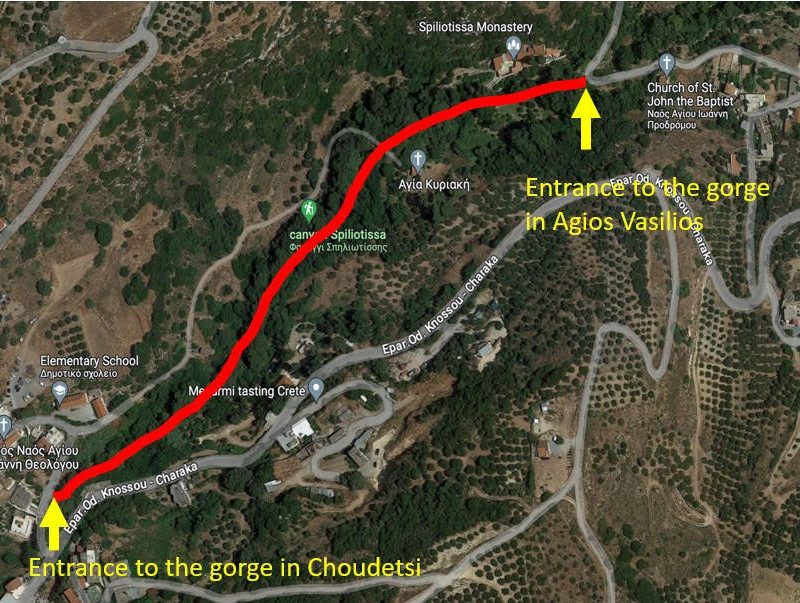Get to know the gorge
The Spiliotissa Gorge runs between the villages of Choudetsi and Agios Vassilios, 21 km south of Heraklion. Entering in Choudetsi, you descend on a beautiful path in lush vegetation, you cross a wooden bridge over a stream, and you end up at the Panagia Spiliotissa Monastery.
Total distance: 500 meters. If you continue further, you will reach the village of Agios Vasilios where you can find the second entrance to the gorge. Regardless of your starting point, you return to it via the same path or via the main road.
At a very short distance from the Monastery of Spiliotissa there are two churches, that of Agios Ioannis and that of Agia Kyriaki. You will meet Agios Ioannis descending from Spiliotissa towards Agios Vasilios on the right and Agia Kyriaki ascending from Spiliotissa towards Choudetsi on the left.
Visit the Spiliotissa Gorge

The Panagia Spiliotissa Monastery belongs to the Mount Sinai Monastery and is located 21 km south of Heraklion, in the jurisdiction of the village of Agios Vassilios.
The creation of the church is supposed to be connected to the discovery of an icon of Virgin Mary inside the cave where the temple is currently located. According to one historical version, the Monastery was founded in the 11th century, however, the prevailing view is that it was founded in the early 14th century.
In the later Venetian period, the Monastery belonged to the famous Venetian family of Falier, while at the end of the 16th century, its minister was the scholar Ioannis Morezino, teacher and first director of the Sinai School of Saint Catherine in Handakas (current Heraklion). The affiliation to the Sinai Monastery is considered to have taken place during the period of the siege of Handakas (1649-1669) or shortly thereafter.
The complex is structured on three levels and is surrounded from the south by a high fortress-like wall. In the eastern part of the middle level is the catholicon, while west of it are the simple monastic buildings, as they were formed over the centuries. The catholicon is shaped to the south with an archway in an open narthex, while internally it is divided into two spaces.
The cavernous church has a wood-carved iconostasis with interesting post-Byzantine images, while in the background there is a unique 15th-century fresco depicting the patroness of the Monastery.
Source: Crete travel Guide
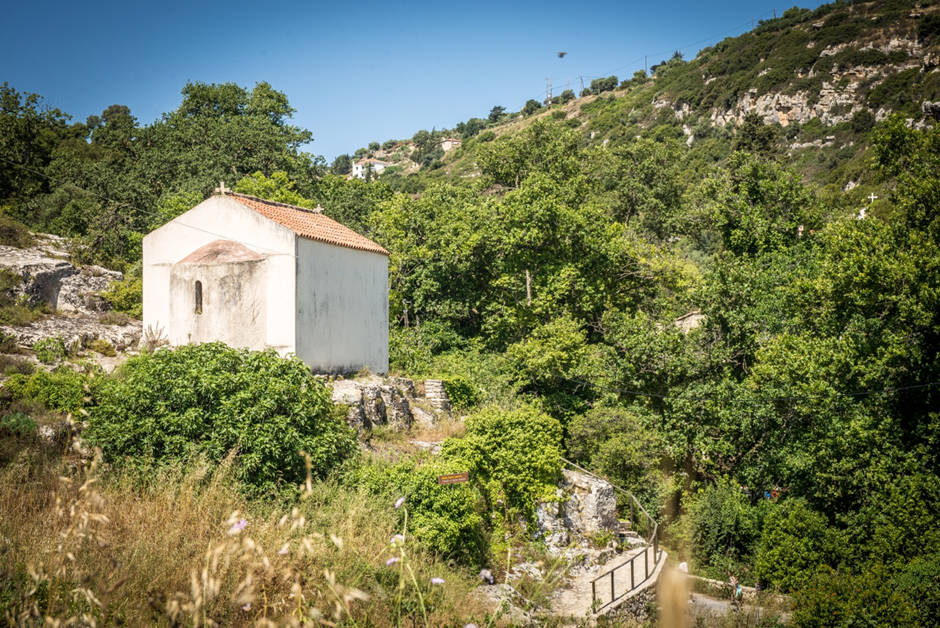
The Church of Agios Ioannis
The holy church of Agios Ioannis belongs to the Byzantine era. A staircase of large stone slabs in harmony with the rich natural environment leads the visitor to the interior of the church, which is full of rare urban frescoes by a great painter of the time. Even today, the figures of Agia Paraskevi, Agia Kyriaki and Agia Marina can be distinguished.
It is said that the church of Agios Ioannis was the cemetery of the Monastery of Agia Kyriaki, as seven skeletons have been identified at this point. The church was renovated in 1295 under Andronikos Palaiologos. It is celebrated on August 29 - the day of the beheading of the holy head and on January 7.
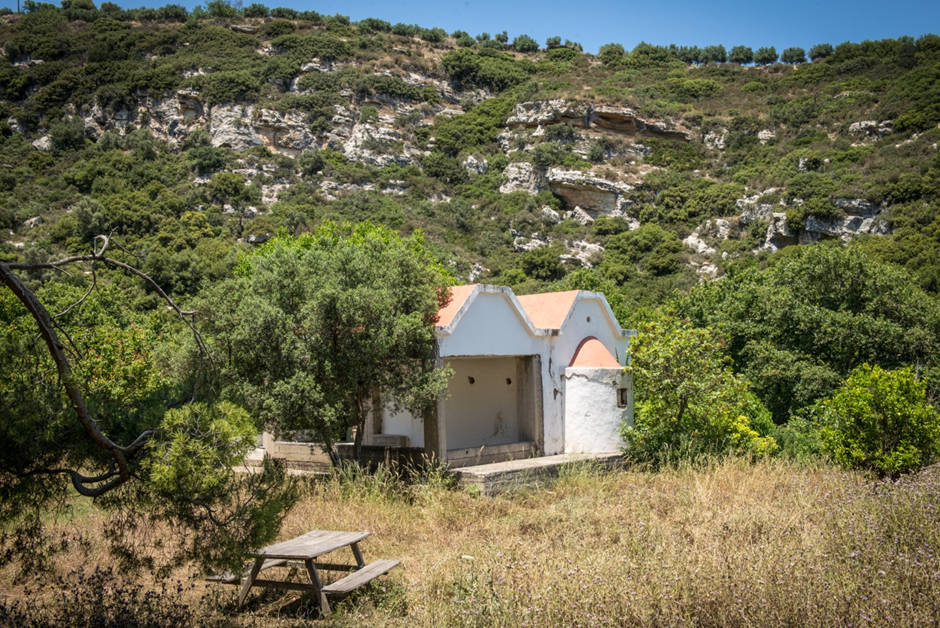
The Church of Agia Kyriaki
The holy church of Agia Kyriaki is mentioned in documents from 1856. At that time, three monks lived there with the abbot, Grigorios. At the same time, the property of the monastery of Agia Kyriaki was sold off with conditions. According to contracts found in the Vikelaia library of Heraklion, a Turk bought the property of the monastery on the condition that he would give 1/10 of its income for the maintenance of the monastery.
In the 14th century the church of Agia Kyriaki was set on fire and completely destroyed by Barbarossa's pirates, who slaughtered all the monks, leading to the decline of the monastery. A little later, the renaissance of the Spiliotissa monastery began.
In 1954, the renovation of the church of Agia Kyriaki was carried out, in which traces of frescoes and a multitude of architectural remains such as slabs, holy windows (agiothyrida) and cornerstones are preserved. The temple had cells which were also destroyed. In addition, possibly on the northern side there is a priestly tomb, which touches the temple.
It is worth noting that the chapels of Agia Kyriaki were the church of Agia Paraskevi, the church of Agios Konstantinos, the church of Michael the Archangel, as well as the church of the Holy Trinity and the church of the Holy Cross located behind the Spiliotissa monastery. Agia Kyriaki celebrates on July 7.
The village of Choudetsi
The area where Choudetsi is located has been inhabited since the Minoan Era. It got its name either from the first lord of the village named Hundios, or from the synthetic words hus and deos (soil and fear). A third version wants the name to come from the Arabic quds (holy), perhaps because the village has many churches. The name of the village, according to Venetian (Cudeci, Chudeci), Turkish and other documents, is mentioned for the first time in 1279.
Choudetsi belongs to the Municipality of Archanes-Asterousia, it is located at an altitude of 470m., and is 21 km from Heraklion. It has about 900 inhabitants, who are hospitable and to whom you can turn for any information you are looking for. The inhabitants of Choudetsi cultivate hundreds of acres, mainly with olive trees and vineyards, located around the village. They produce a multitude of traditional agricultural products.
Choudetsi has a remarkable musical tradition that continues to this day with many artistic events. A leading role has been played by the Labyrinth Music Workshop, which has been based in the village since 2000, with Ross Daly as artistic director. The Choudetsi Festival (2010-2016) was crowned with success in previous years, which in recent years has been replaced by the Music Fridays. Many children and adults are engaged in learning musical instruments.
There are many shops and services that can meet the needs of visitors, such as cafes, taverns, rooms for rent, bakeries, supermarkets and a pharmacy.
Source: Choudetsi cultural association
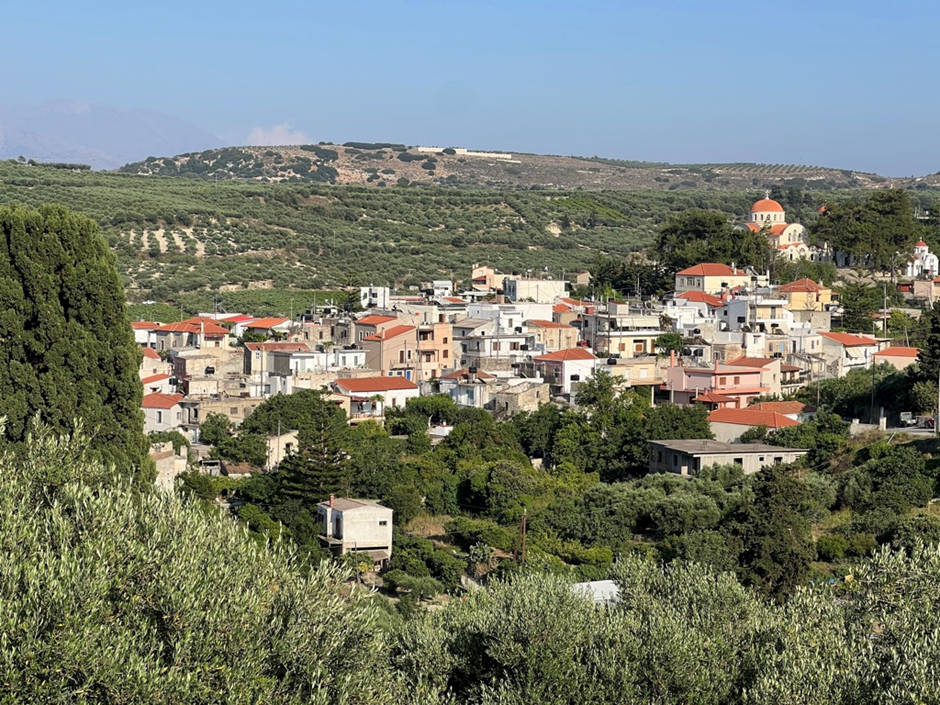
The village of Agios Vasilios
Agios Vasilios is located at the foot of the Kefala hill in a nice location with a panoramic view at an altitude of 347 meters and is 21 km from Heraklion. Many residents are traditionally engaged in viticulture and olive tree cultivation, but now many professions have entered the lives of the people of Agios Vasilios, while the number of teachers produced by Agios Vasilios is exceptionally large. Hatzivasilis is considered the first inhabitant of the village, who created the first church of Agios Vasilios in the village, of which he is also the patron. Nowadays, next to the new church of Agios Vasilios is the first and smallest church from which the village probably got its name.
In Venetian sources, such as in the census of Kastrophylakas (1583), Agios Vasilios is mentioned as S. Baseggio with 269 inhabitants (Kastrophylakas, K 94). During the events of September 14, 1943, after the execution of the residents of Krevvatas, the Germans entered Agios Vasilios and scattered in the streets. They opened the doors of the houses and took those they found. They led those who had gathered to the President's café, they lined them up and executed 31 men.
Another characteristic element of the village is the many temples surrounding it - over thirteen. It is said that these temples were built to protect the village from a plague that had afflicted it. In addition to its churches, the village has several special monuments: three fountains from the Ottoman and Venetian era that are still preserved today in good condition and a modern amphitheater, the "Manos Katrakis" theater, where several events take place especially in the summer but also in Christmas.
In Agios Vasilios one can wander through the alleys, admire the rich natural beauty especially in the Spiliotissa gorge, get in touch with tradition, enjoy traditional dishes from the village taverns as well as sweets from the Women's Agricultural Cooperative "Vassileion Sweetness”.
Source: Wikipedia, Agios Vasilios Cultural Association





